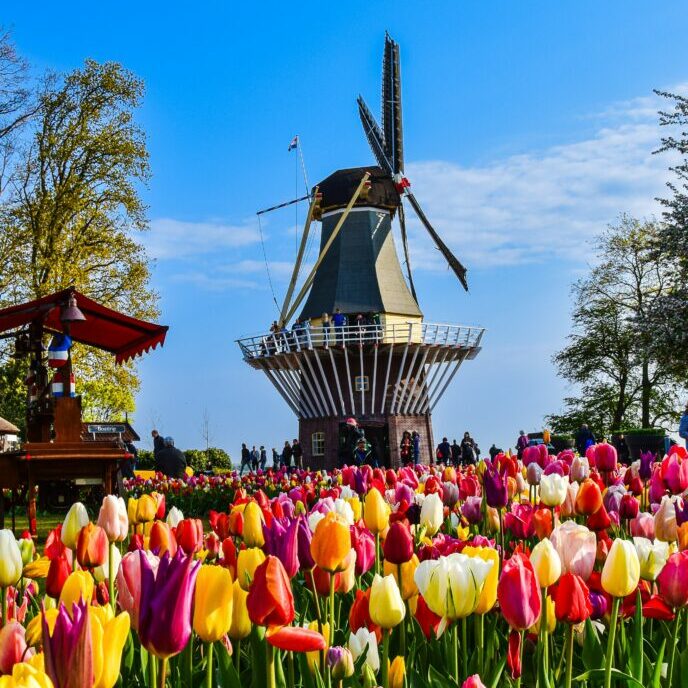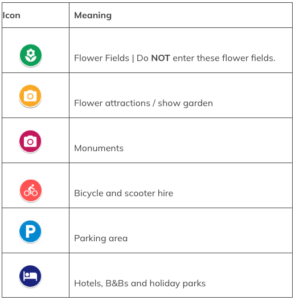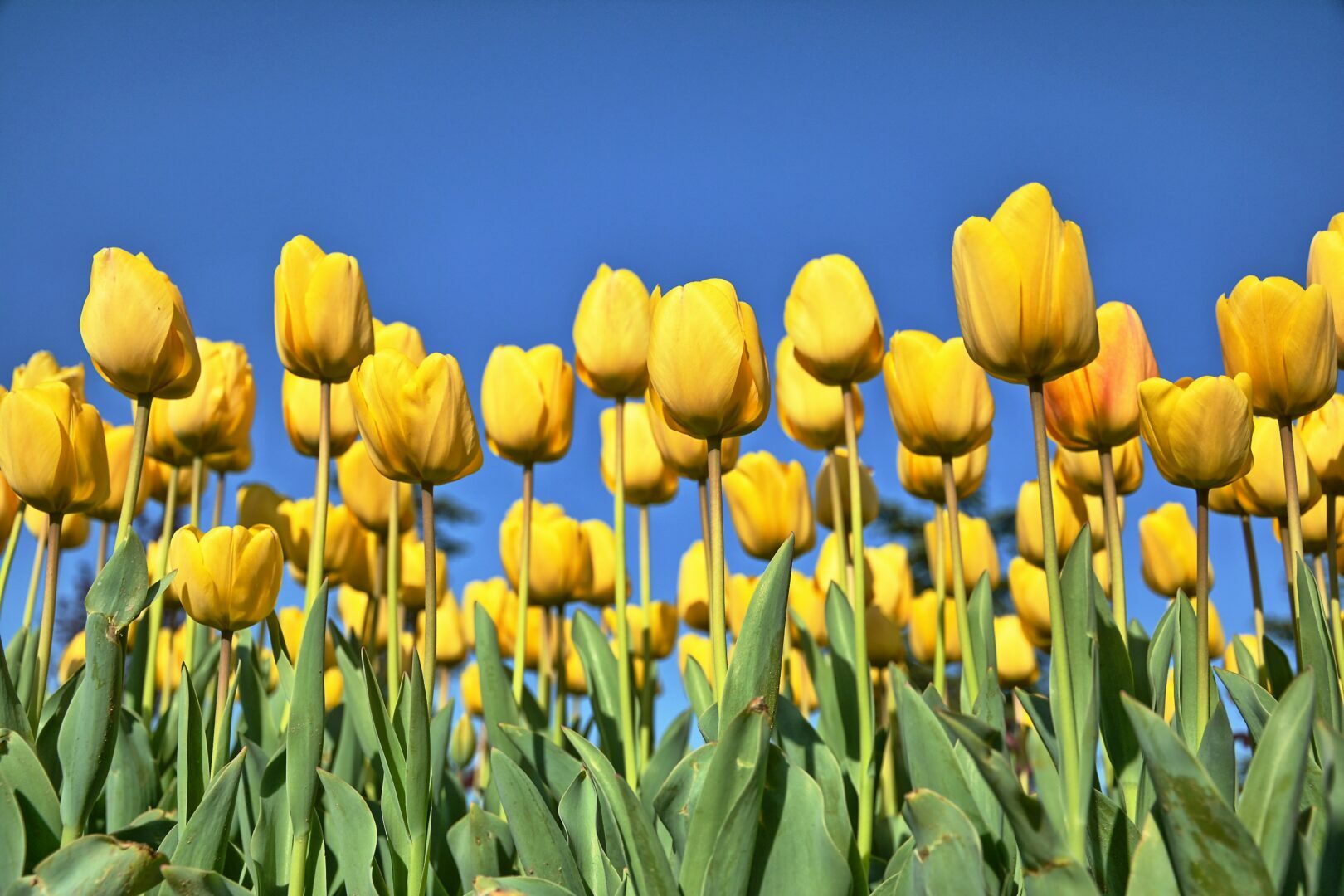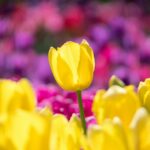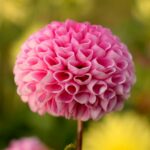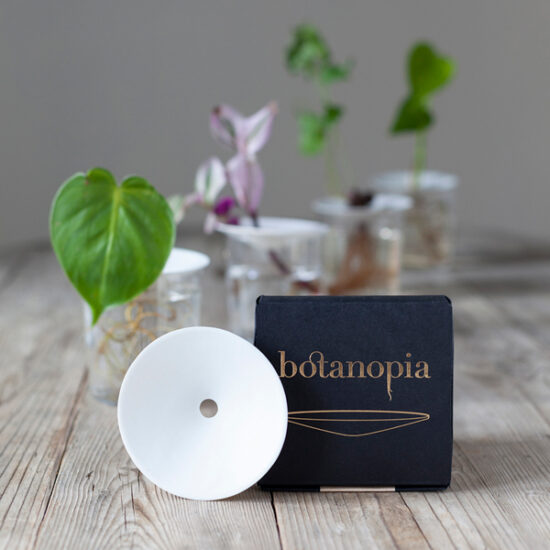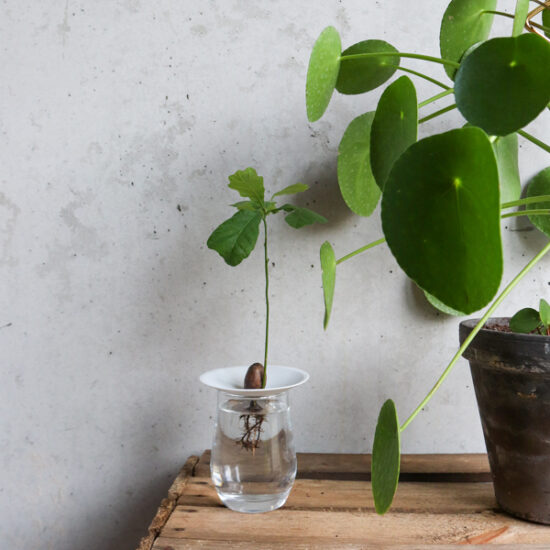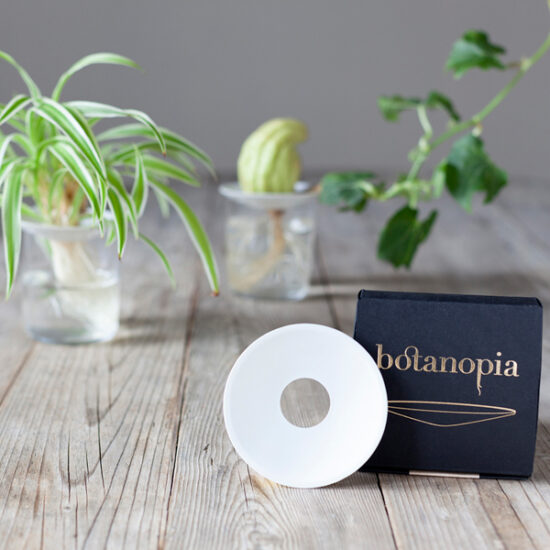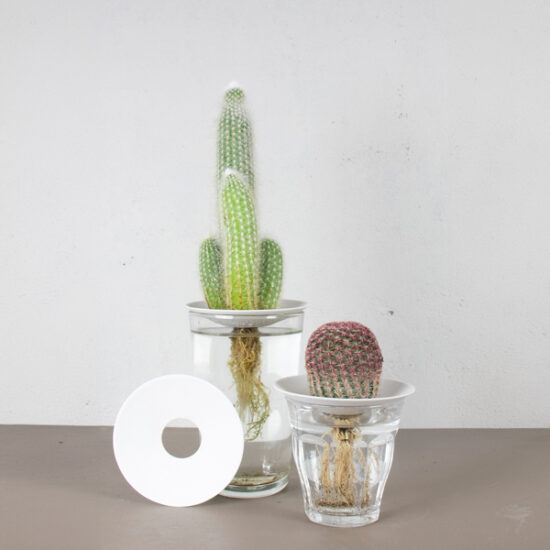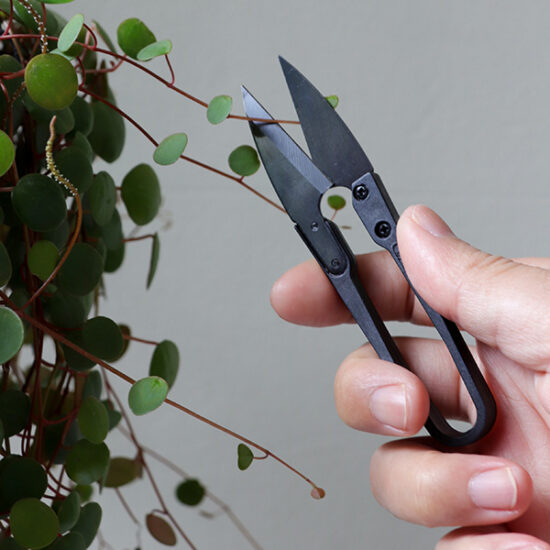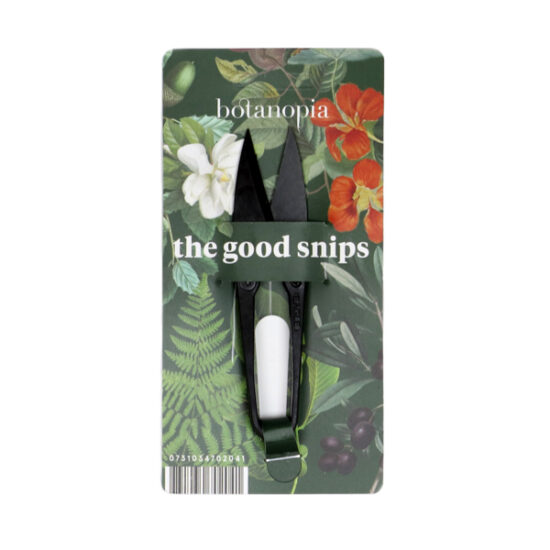Discover Holland's iconic tulip fields - they're even more beautiful than you thought!
It's the season!
Tulip season is a magnificent time of year in the Netherlands when tulip fields and gardens burst into bloom with a kaleidoscope of vibrant colors.
Typically running from mid-March to mid-May, this is the perfect time to visit the country and see the iconic tulips in all their glory. From stunning fields of reds, pinks, yellows, and oranges to beautiful displays in gardens and public spaces, there are endless opportunities to experience the magic of tulip season.
In this article, we will take you through the best time to see tulips, where to find them, the famous Keukenhof garden, sustainability and ethics, and our best tips to take photos among the flower fields for those aesthetic Instagram posts.
Historical background
Tulips are maybe the most iconic symbol of the Netherlands, right next to windmills, clogs, and cheese wheels. Did you know that tulips were not originally from the Netherlands? In fact, they were introduced to the country in the 16th century from the Ottoman Empire (modern-day Turkey). The flowers quickly became popular in the Netherlands, and by the 17th century, the country had become the center of the tulip trade. The Dutch were particularly fond of the tulip, and it became a status symbol among the wealthy and elite. The flower’s vibrant colors and unique shape made it highly desirable, and its scarcity only added to its attraction. Today, the Netherlands is still the world’s largest tulip producer, exporting millions of bulbs every year.
Where are the tulip fields in the Netherlands?
Bollenstreek area: Keukenhof, Lisse, Noordwijk
The best place to see tulips in the Netherlands is in the region known as the Bollenstreek, or the “bulb region.” The Bulb Region is made up of several towns and villages, including Lisse, Hillegom, and Noordwijkerhout, all of which are famous for their flower fields.
The Bollenstreek is also home to countless tulip farms, where the flowers are grown in huge fields that stretch endlessly.
Visitors to the Netherlands during tulip season can enjoy not only the beautiful fields but also a range of tulip-related activities, including guided tours, bike rides, and even helicopter flights over the fields. The famous Keukenhof Gardens known as the ‘’garden of Europe’’, located just outside Amsterdam in Lisse, is a must-visit destination for anyone interested in tulips, featuring over 7 million bulbs and 800 varieties of tulips.
This is the largest flower garden in the world and attracts over a million visitors each year. The annual Keukenhof Flower Exhibition is held from late March to mid-May. The exhibition features millions of tulips, daffodils, and other spring flowers, arranged in elaborate displays.
Keukenhof is situated in a beautiful location. Visitors can explore the different themed sections of the garden., such as the Japanese Garden, the English Landscape Garden, and the Historical Garden. There are also numerous sculptures and art installations throughout the garden. Aside from the gorgeous floral displays, Keukenhof also hosts various events and activities during its opening season, such as flower arranging demonstrations, guided tours, and musical performances. Many of the farms are open to visitors during the tulip season, and some even offer guided tours to give visitors a closer look at the cultivation process.To get to the tulip farms in the Bollenstreek, the best option is to rent a car or take a bus from Amsterdam.
If you are looking to take stunning pictures among the flower fields, a guided tour is a good option. Although, you are not allowed to walk through the farms, so make sure to ask permission from the farmers if you wish to do so. There are however designated farms for taking selfies and photos, and the Tulip barn is a unique experience for the young and old (check the map).
In addition to the Keukenhof, there are many other places in the Netherlands where visitors can see tulips in bloom.
The city of Amsterdam is also home to the famous Bloemenmarkt, or floating flower market, which sells a wide variety of bulbs and flowers year-round. The market is a great place to pick up some tulip bulbs to take home as a souvenir or to plant in your own garden and enjoy the flowers. Be aware that tulips are seasonal and should be purchased in the fall!
Noordoostpolder, Flevoland
Noordoostpolder is another major agricultural area, known for its fields of flowers, including tulips, daffodils, and hyacinths, which attract visitors from all over the world. It’s located to the North East of Amsterdam, about an hour drive away.
You should come by car to have the best experience and follow a route called the tulip route organized by the region. Compared to the most famous spots near Amsterdam, there are fewer tourists in Noordoostpolder. A great option if you want to avoid the crowds.
The main town in Noordoostpolder is Emmeloord. Other towns and villages in the area include Marknesse, Ens, and Kraggenburg.
When do tulips bloom in the Netherlands?
The Tulip season in the Netherlands typically runs from mid-March to mid-May, depending on the weather conditions. During this time, the fields are awash with bright reds, pinks, yellows, and oranges, which are a stunning sight to see. Besides the tulips, there are also lots of other flower bulbs being cultivated, such as hyacinths and daffodils that also bloom on a slightly different schedule.
Where can I purchase tulip flowers or bulbs?
During tulip season you can purchase fresh tulips from local markets, florists, and even supermarkets in the Netherlands. Many of the tulip farms offer guided tours(they may require reservations in advance). You can also buy tulips from the farmers themselves next to the fields. There are self-serve little stalls set up, where you can leave your payment in cash or pay by qr-code, for the most modern farmers!
In the Netherlands, September, October, and November are the best months to purchase flower bulbs. So you won’t be able to buy fresh tulips and bulbs at the same time.
How far are the tulip fields from Amsterdam?
The journey takes around 30 minutes by car or an hour by bus. You can take bus number 50, which runs from Amsterdam to Leiden, and get off at the Keukenhof bus stop. From there, you can walk or cycle to the tulip fields in the Bollenstreek. For those looking for a picturesque afternoon cycle, you can bike to see the tulip fields.
The Tulip Festival in Amsterdam
Every year in Amsterdam during April, the Tulip Festival takes place. During this time tulips are everywhere in public, along the streets, in the squares, in the parks and in the gardens. It is a beautiful time to stroll around Amsterdam, enjoying the colorful tulip presentations all over the city.
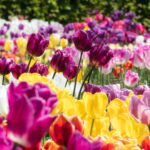

When we say bulb, what do you think of?
There are many types of flower bulbs, each with its own unique characteristics and growing requirements. Here are some examples of popular flower bulbs:
Tulips:
Known for their vibrant colors and iconic shape, tulips are a popular choice for gardens and floral arrangements.
Daffodils:
Along with their cousins the narcissus, these cheerful flowers range from almost white to bright yellow, and are a symbol of spring and renewal.

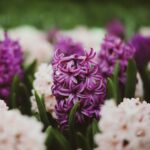
Hyacinths:
These fragrant, bell-shaped flowers come in a variety of colors, including pink, blue, and white.
Crocus:
These small, delicate flowers are one of the first signs of spring, with their purple, white, or yellow petals pushing up through the snow.
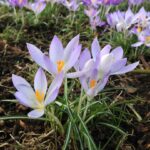

Snowdrops:
Another early bloomer, snowdrops are small, white flowers that bloom very early and are one of the first flowers to pop up from the winter snow layer.
Alliums:
These globe-shaped flowers come in a range of colors and sizes, from small purple blooms to giant spheres of pink or white.
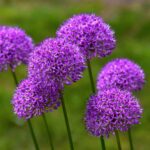
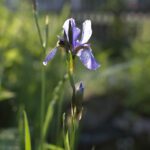
Iris:
With their intricate petals and bold colors, irises are a striking addition to any garden or floral arrangement.
Gladiolus:
These tall, spiky flowers come in a range of colors, from soft pastels to bright, bold hues.
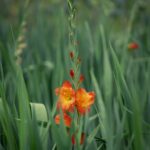
Dahlias:
These showy flowers come in a variety of sizes and shapes, from small pom-pom blooms to large, dinner-plate-sized flowers.
Lilies:
These elegant flowers come in many varieties, including Asiatic, Oriental, and Trumpet lilies, each with its own unique characteristics and growing requirements.
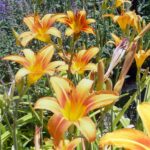
Tulip varieties
The most common varieties of tulips grown in the Netherlands, which can be seen in the colorful fields during the tulip season, are the Single Early Tulips, Double Early Tulips, and Triumph Tulips. These tulips are popular due to their early blooming period, bright colors, and sturdy stems, which make them suitable for cutting and floral arrangements.
The Single Early Tulips bloom in April and come in a wide range of colors, including white, pink, red, yellow, and orange.
The Double Early Tulips are known for their lush, peony-like appearance and come in colors such as pink, red, and yellow.
Triumph Tulips, with their vibrant colors and sturdy stems, are a popular choice for cut flowers and come in colors such as red, orange, yellow, and pink.
There’s also the frilly parrot tulips. They were given this name because the lobed or serrated edges of their blossoms resemble the feathers of a parrot and give them a somewhat ruffled appearance. Tulips in the Triumph class and some late-flowering tulips were used to create Parrot Tulips.
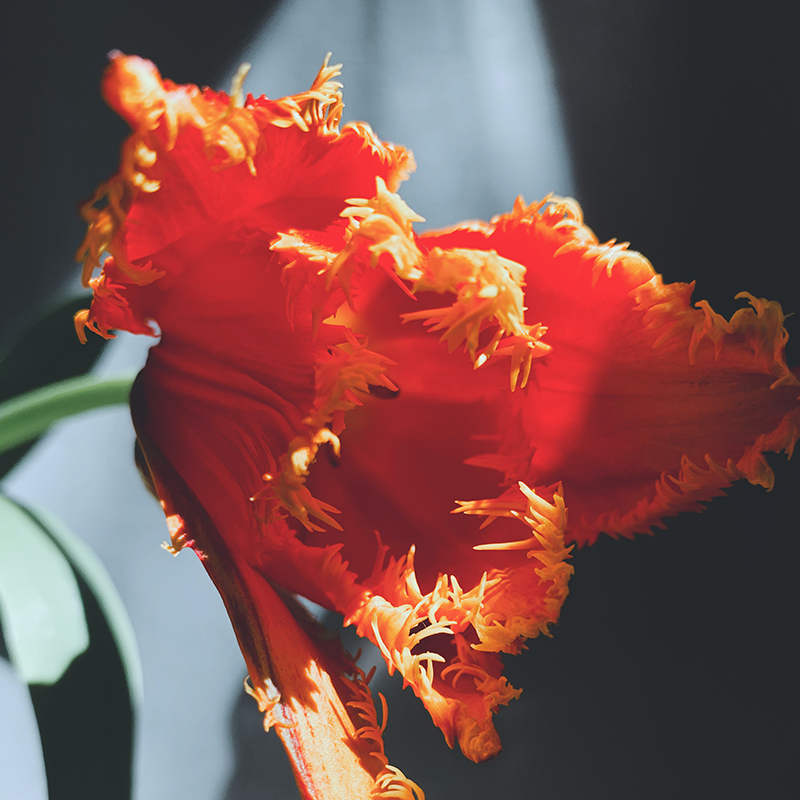
Parrot Tulip
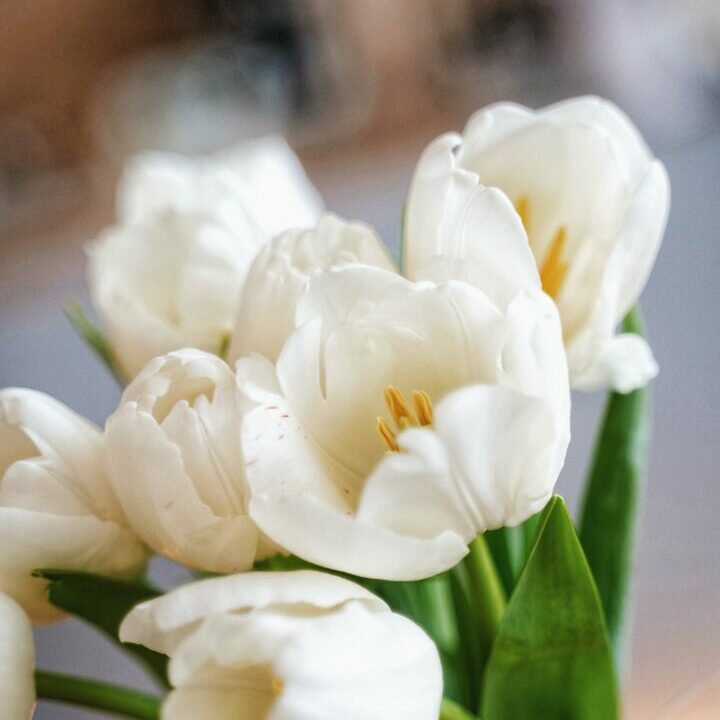
Triumph Tulip
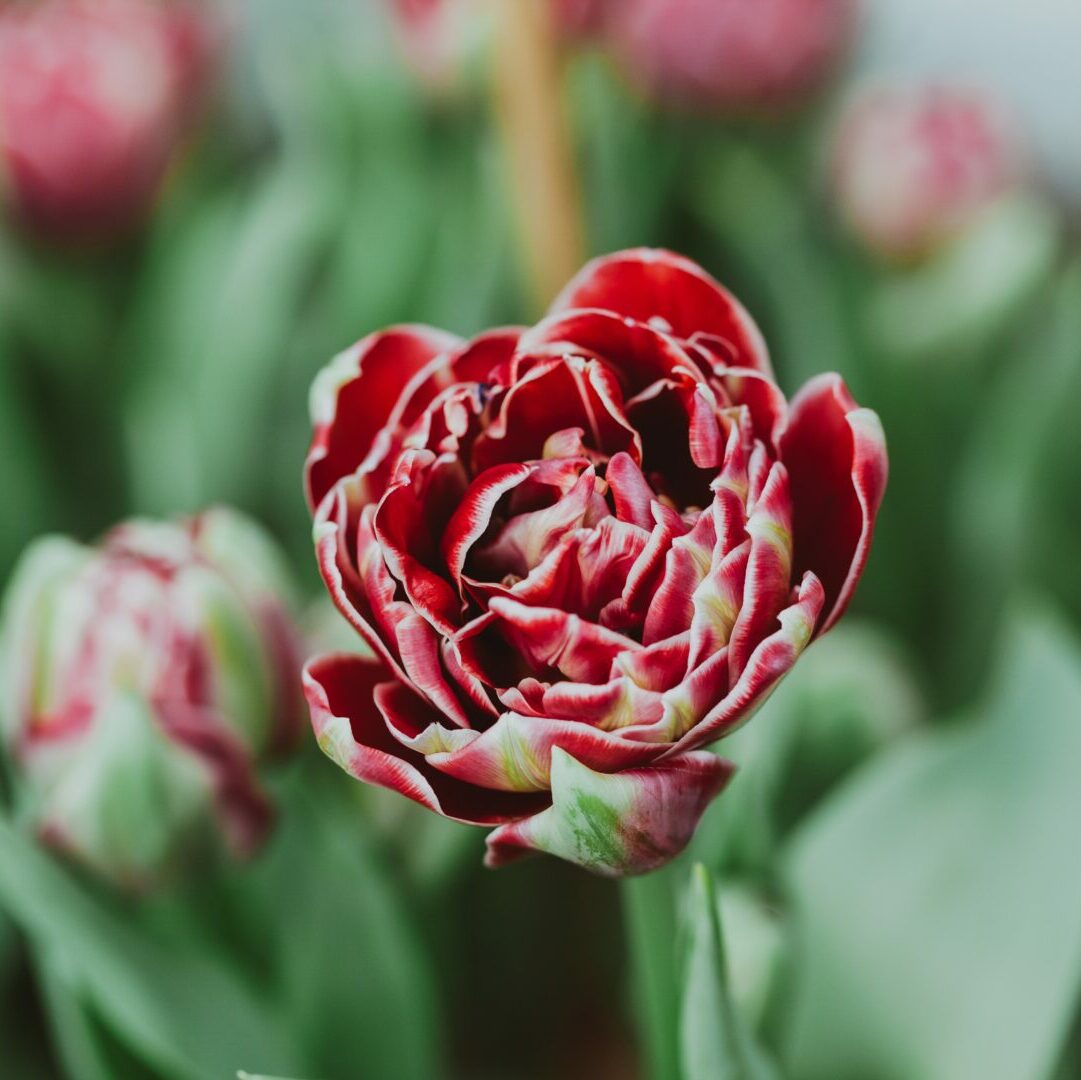
Double Early Tulip
Tulip farms in other countries
Norfolk in the UK hosts a large tulip farm that is open to the public for two weeks during late April and early May.
In the USA, the best state for tulips is Washington. Mount Vernon in particular houses impressive tulip fields and a rich history. Here you can find the Skagit festival during the month of April, sometimes running into May.
Mount Vernon has a few different fields, including Roozengaarde and tulip Town. You do have to pay an admissions fee to enter these fields.
In Canada, the tulip season consists mainly of the Canadian Tulip Festival which lasts from the 12th to the 23rd of March in Ottawa. The festival includes opportunities to buy products from mini-markets, watching movies, and seeing the tulips at night. It is organized by the Canadian Tulip Legacy, which is a charity that honors the Canadian soldiers who passed in the liberation of the Netherlands and the gift of tulips that the Dutch sent for all Canadians.
In France, tulip lovers can go to Provence to the fields of Alpes-de-Haute-Provence from late March to early April. These fields are more known for their lavender fields, but if you are lucky you can manage to see a beautiful display of colorful tulips.
Tulip bulbs:
Growing and farming them
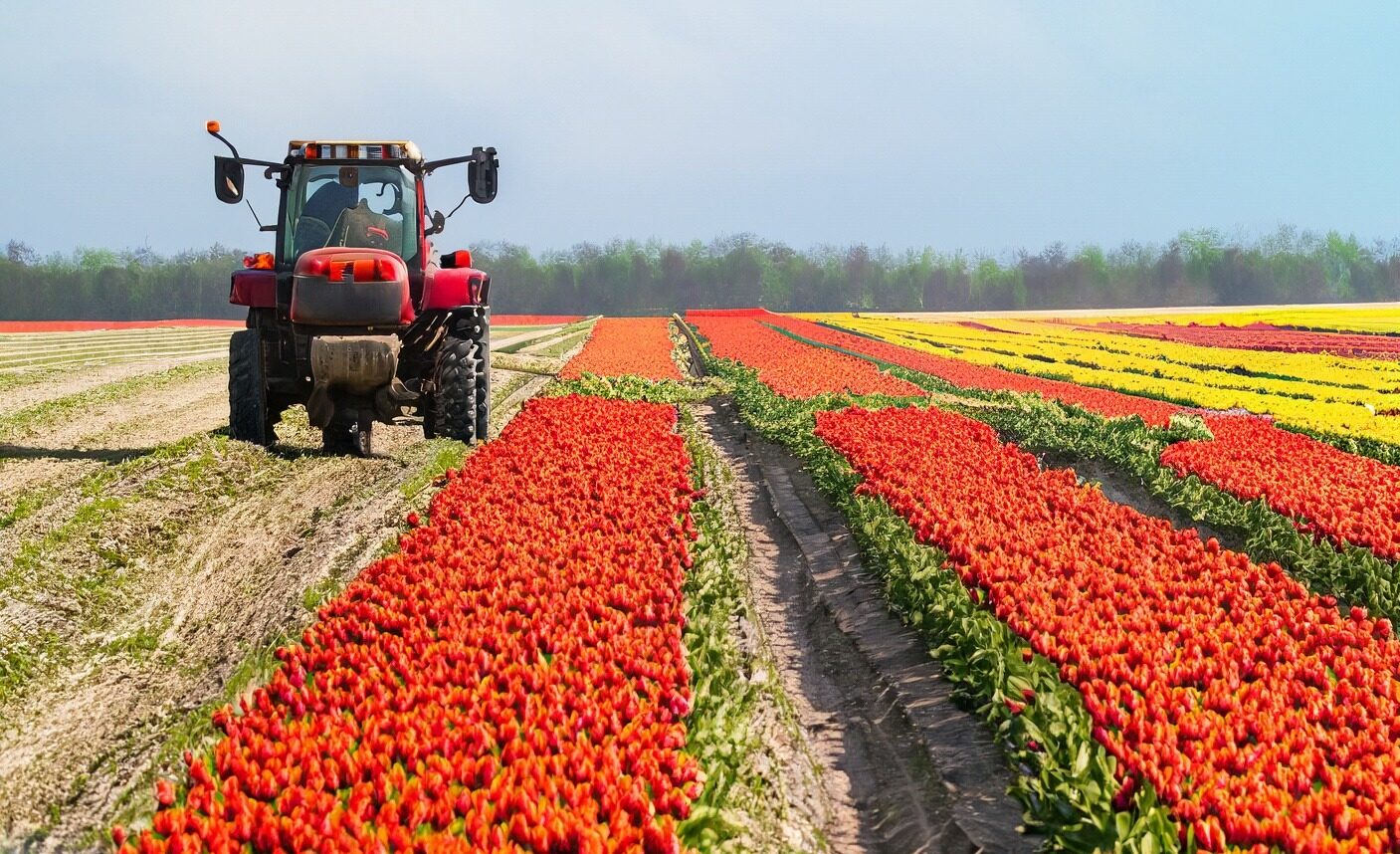
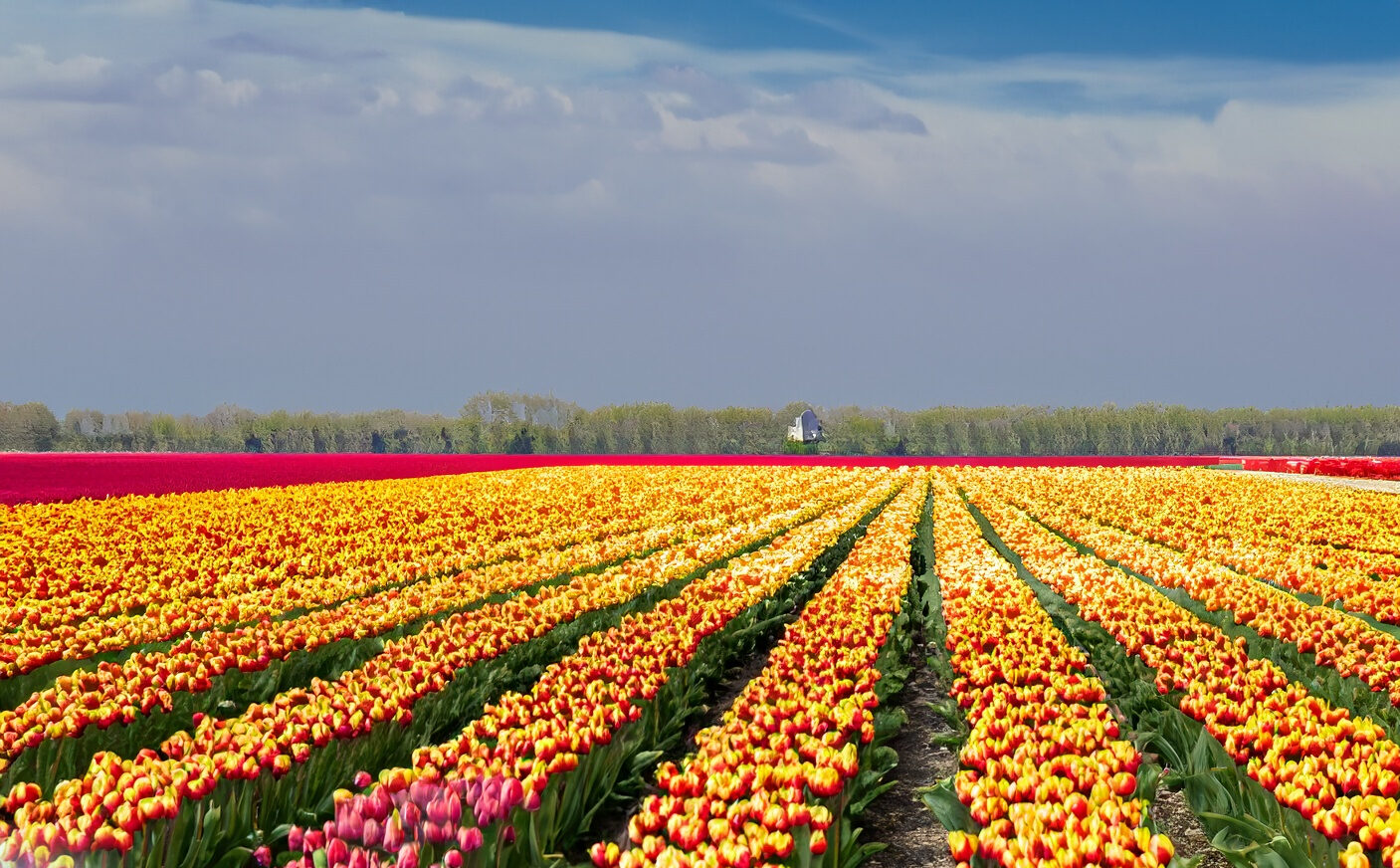
When to buy tulip bulbs?
For those new to gardening, buying tulip bulbs can be an exciting yet daunting task. The best time to buy tulip bulbs is in the late summer or early fall, typically from August through October, when garden centers and online retailers start offering them for sale. This allows enough time for the bulbs to be planted in the fall, giving them a chance to root and establish themselves before the winter. It’s important to choose healthy bulbs that are free from signs of damage or disease, and to store them properly until planting time. Some unscrupulous tourist shops will sell you tulip bulbs all year long, but only purchase them in peak season.
When to plant tulip bulbs?
Tulip bulbs should be planted in the fall, usually from late September to early December.
How deep to plant tulip bulbs?
The bulbs should be placed about 15 cm (ca. 6 inches) deep and spaced several cm apart to allow room for growth. After planting, the soil needs to be watered to help the bulbs settle in and establish roots.
During the winter, the bulbs remain dormant, and farmers must monitor the soil moisture to prevent the bulbs from drying out. In the spring, the bulbs start to sprout and grow, and farmers must monitor for pests and diseases.
When the tulips bloom in the spring, they are ready for harvest. The flowers can be cut and sold for the cut flower market, while the bulbs are left in the ground to mature and produce offsets (baby bulbs) that can be harvested in the future. Or, the farmers will cut off the head of the flower, called “topping” in order for the nutrients to go to the bulb instead of the flower, so the bulb grows big.
After the leaves have died back and turned brown, the bulbs are ready for harvest. Farmers use special equipment, such as bulb lifters and conveyors, to dig up the bulbs without damaging them. The bulbs are then sorted by size, quality, and variety. Once harvested, the bulbs are cleaned, sorted, and stored in a cool, dry place until the next planting season. Farmers must carefully monitor the bulbs for signs of disease or mold and take steps to prevent these problems from spreading.
How to store tulip bulbs?
To store tulip bulbs, wait until early summer, when the foliage has turned yellow and withered. Carefully dig up the bulbs and remove any excess soil, then allow them to dry completely in a well-ventilated area for several days. Store the bulbs in a cool, dry place, such as a garage or basement, in a container that allows for air circulation, like a mesh or paper bag. Be sure to label the bulbs with their variety and color, and check on them periodically to ensure they are not rotting or sprouting. With these steps, you can successfully store tulip bulbs and plant them later to enjoy beautiful, colorful blooms.
Grow beautiful floating tulips in water indoors
Simply place the elegant porcelain propagation cone on any glass or jar and place your bulb on top, with the bottom of the bulb touching the water. Soon you’ll see pretty white roots growing, then the leaves and finally the flower will emerge. Dwarf varieties of tulips or daffodils are perfect. You can also try a fragrant hyacinth or muscari.
This germination plate is made of porcelain to make it highly durable and reusable year after year.
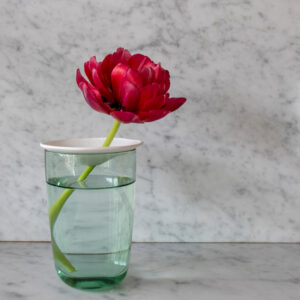
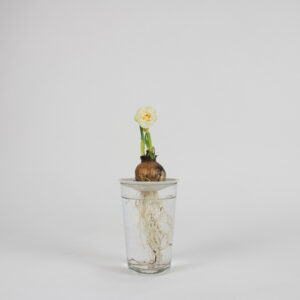
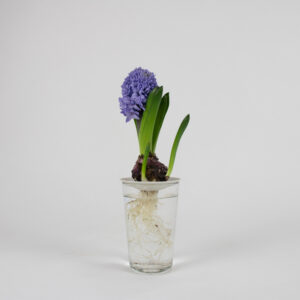
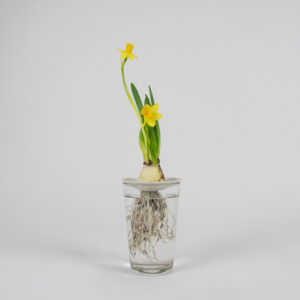
The perfect tips to grow your own bulb in water:
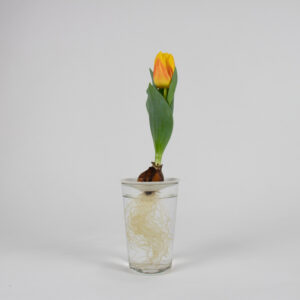
Growing tulip bulbs in water is a fun and easy way to enjoy the beauty of tulips indoors, even if you don’t have access to a garden or outdoor space. Here are the steps to grow tulip bulbs in water:
- Select healthy bulbs: Choose firm, plump tulip bulbs that are free from damage or disease. Smaller bulbs are great for this, as bigger ones might become too top-heavy when in full bloom.
- Tulip bulbs need a period of cold temperatures to simulate winter and encourage root growth, it’s called cold stratification. Place the tulip bulbs in a paper bag or plastic container with some peat moss, vermiculite, or perlite to keep them moist.
- Place the bag or container in the refrigerator’s vegetable crisper drawer, where temperatures range between 35-48°F (2-9°C).
- Let the tulip bulbs chill in the fridge for at least 12-16 weeks, which is necessary for the bulbs to go through a process called vernalization. This tricks the bulbs into thinking the winter has passed already and triggers the forming of blooms.
- After the required chilling period, remove the bulbs from the refrigerator and let them grow:
- Prepare the bulbs: Gently remove any loose outer layers of the bulb, leaving the inner layers intact. This will help the bulb absorb water more easily.
- Place the bulb on a germination plate, on top of a glass of water: carefully place the bulb on the plate with the pointed end facing up. The water should touch the bottom of the bulb.
- Move to a bright, sunny spot such as a windowsill. The bulb should start to sprout within a few weeks.
- Care for the tulip plant: Change the water every few days and keep the container filled to the same level. Provide plenty of sunlight and keep the plant away from cold drafts.
Watch it grow in front of your eyes: the bulb on the left of the video is a little tulip.
How to plant tulip bulbs in the soil:
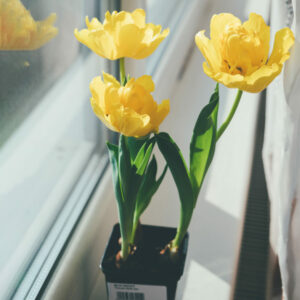
If you want to fill your garden with beautiful tulips, it’s easy! Just follow these steps on how to plant them:
- Choose healthy bulbs: Select tulip bulbs that are firm, plump, and free from signs of damage or disease. The bigger the bulb, the bigger the flower it will produce.
- Plant at the right time: Tulips should be planted in the fall, usually between September and November, before the ground freezes. This allows the bulbs to establish roots before the winter.
- Plant in the right location: Tulips prefer well-draining soil and a spot with full sun or partial shade. They also need good air circulation to prevent disease.
- Prepare the soil: Tulips prefer soil that is rich in organic matter, so add compost or other organic material to the planting area before planting. The soil should also be well-draining to prevent rot.
- Planting tulip bulbs at the right depth is crucial for their successful growth. Place the bulbs in the soil with the pointed end facing upwards, at a depth of about 15 centimeters (6 inches) for both imperial and metric measurements. Make sure to space the bulbs 10-15 centimeters (4-6 inches) apart. If planting in a container, use a well-draining potting mix and plant the bulbs about 5-8 centimeters (2-3 inches) apart.
- Water properly: Tulips require regular watering, especially during the growing season. Keep the soil moist but not waterlogged, as too much moisture can cause the bulbs to rot.
- Fertilize appropriately: Tulips don’t need a lot of fertilizer, but a balanced fertilizer can help promote healthy growth. Apply fertilizer in the fall when planting and again in the spring when the leaves emerge.
- Protect from pests and disease: Tulips are susceptible to pests and diseases, such as aphids, bulb mites, and fungal diseases. Keep the planting area clean and free from debris, and consider using organic pest control methods if necessary.
- Allow leaves to die back naturally: After the tulip blooms have faded, allow the leaves to die back naturally before removing them. This allows the bulbs to store energy for the next growing season.
Now you can successfully grow your own beautiful tulip bulbs and enjoy their colorful blooms year after year!
Colorful, but not sustainable: the environmental consequences of flower bulb farming
The Tulip fields in the Netherlands are not just a pretty sight, but also an important part of the country’s economy.
The Netherlands is the world’s second-largest exporter of agricultural products, and tulip cultivation is a significant contributor to this industry.
How many tulips are grown in the Netherlands? The country’s tulip farms cover around 10,000 hectares of land and produce over 4 billion tulip bulbs each year.
However, this industry has come under scrutiny in recent years due to a number of issues, including unsustainable farming practices, environmental degradation, and exploitation of workers.
One of the biggest problems facing the bulb industry is the intensive farming practices used to cultivate tulip bulbs. To produce large quantities of bulbs, farmers often rely on heavy use of pesticides and fertilizers, which can have harmful effects on the environment and human health.
Pesticides can contaminate water sources, harm beneficial insects and other wildlife, and contribute to the development of resistant pests. Moreover, the excessive use of fertilizers can lead to soil degradation and nutrient depletion, affecting the long-term sustainability of farming.
Another issue with the bulb industry is the environmental impact of tulip bulb fields. While the fields are a beautiful sight, they can be damaging to the local ecosystem. The vast monoculture fields of bulbs can lead to soil erosion and a loss of biodiversity, particularly if the fields are not rotated properly. Moreover, the heavy machinery used for planting, harvesting, and maintenance can have negative impacts on soil structure and compaction.
In addition to environmental concerns, there are also ethical issues associated with the bulb industry. Many of the workers who plant, harvest, and process the bulbs are seasonal migrants from Eastern Europe, working long hours for low pay in harsh conditions. Some have reported exploitation, including working without contracts, inadequate housing, and exposure to hazardous pesticides.
Ways to promote ethical and eco-friendly practices
The flower bulb industry might not be entirely rose-coloured (pun intended), but there are signs of positive progress. As a consumer, you can also play your part in the shift for a more sustainable industry.
When purchasing tulips, look for labels or signs indicating that the tulips were grown organically or locally to you. Organic tulips are grown without synthetic fertilizers or pesticides so that your garden will not only bloom beautifully but also support essential insect life and biodiversity.
By choosing sustainably grown tulips and supporting certified farms, you can help promote more sustainable and ethical practices in the tulip industry.
One way to more support tulip farmers is to buy locally-grown tulips. By purchasing tulips directly from local farmers or at farmers’ markets, you can help them retain more of their margins and promote sustainable farming practices. Look for labels or signs indicating that the tulips were grown locally or sustainably, and ask the farmers about their cultivation practices.
And finally, an easy way to be more sustainable with any flower grown from bulbs, is to replant them! Once the flowers are spent on your pretty indoor arrangement of spring flowers, plant them in the ground so they can flower again next year, and for many more years to come.
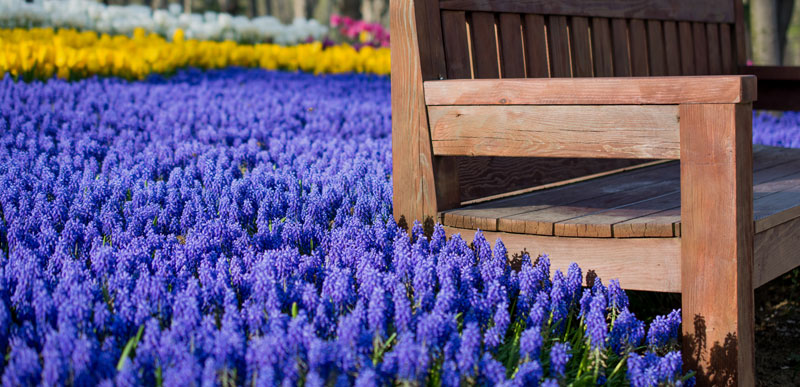
Want to grow beautiful plants and flowers with ease?
These tools are perfect for adding a touch of nature to any space!
-
Sale! Original price was: 4,18£.3,48£Current price is: 3,48£.

